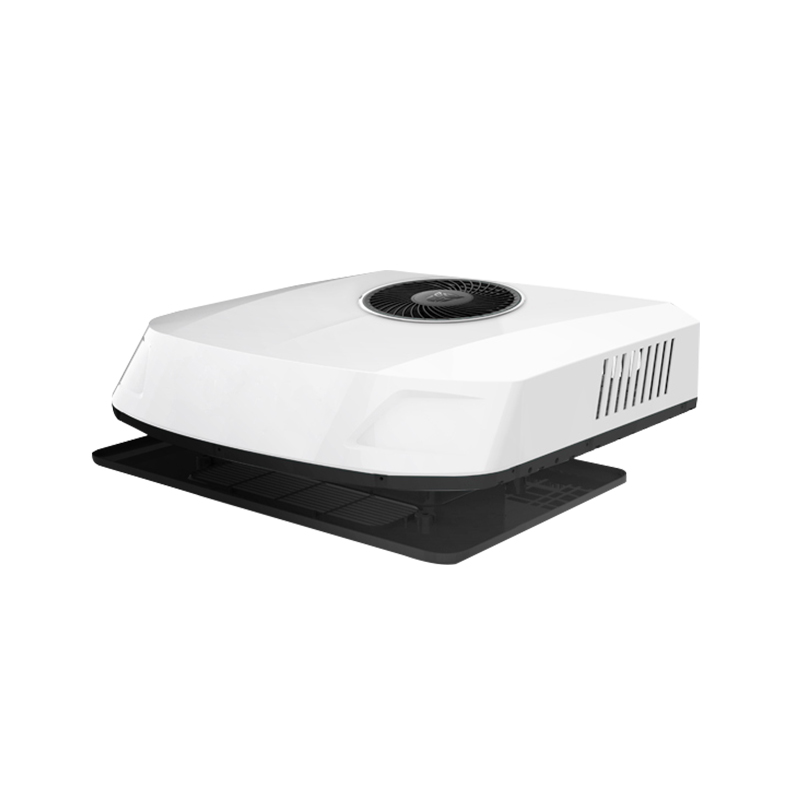When outfitting an RV with a 12V air conditioner (AC), there are several critical design factors to consider in order to maximize performance, energy efficiency, and comfort. These factors include power consumption, installation requirements, cooling capacity, and reliability—especially when operating on a battery-powered system. Here's a closer look at the primary considerations for designing an 12V AC unit for RV.

1. Power Consumption and Efficiency
The major consideration is the power consumption of the unit. Since RVs often rely on batteries or auxiliary power sources, the 12V AC unit must be energy-efficient to minimize drain on the battery. Opting for an energy-efficient compressor and inverter-driven technology can help reduce energy consumption while still providing effective cooling. Solar-powered RVs also benefit from these energy-efficient units since they can reduce reliance on the vehicle's battery or generator.
2. Cooling Capacity
The cooling capacity of a 12V AC unit is another crucial factor. The unit needs to provide enough cooling to maintain a comfortable temperature inside the RV. Cooling capacity is generally measured in BTUs (British Thermal Units), and selecting the correct size for the RV's interior space ensures that the AC doesn't have to overwork, which could faster battery depletion or inefficient cooling. A well-matched unit to the RV's size will improve overall efficiency and user satisfaction.
Cargo trailers are versatile tools, often used for transporting goods, equipment, or providing temporary spaces for services. When transporting a cargo trailer air conditioner (AC), special care must be taken to ensure that it is safely secured, doesn't get damaged, and is properly supported throughout the journey.
The step in transporting a cargo trailer AC unit is securing it within the trailer. AC units, particularly larger ones, can be heavy and cumbersome, and if they are not properly secured, they may shift during transit, causing damage to both the unit and the trailer. Using straps, securing braces, or custom mounts helps keep the unit in place during transportation. It's important to avoid placing heavy items on top of the unit to prevent any physical damage to sensitive components.
When transporting an AC unit in a cargo trailer, it's essential to protect it from adverse weather conditions. AC units are sensitive to moisture, which can damage electrical components or cause rust. If the trailer does not have a weatherproof cover, consider using a tarp or plastic covering to shield the unit from rain or excessive humidity. Additionally, temperatures, especially heat, can affect the functionality of the unit, so storing the AC in a climate-controlled section of the trailer, if possible, will help preserve its integrity.
Many cargo trailers are not designed with ventilation in mind. During transport, poor ventilation can cause excessive heat buildup around the AC unit. If you're transporting a trailer-mounted AC, ensure there's adequate airflow around the unit to avoid overheating. Some trailers come equipped with built-in vents, but if yours doesn't, you may want to install temporary openings or make provisions to improve air circulation during transit.
Energy-efficient RV air conditioners (ACs) are designed to balance comfort with power usage, offering an solution for mobile living. When choosing an energy-efficient AC unit for an RV, it's important to understand the functions and features that contribute to both energy savings and cooling performance. Here's an overview of the key related functions of these units.
1. Inverter Technology
One of the primary functions of energy-efficient RV AC units is the use of inverter technology. Traditional AC units use a fixed-speed compressor that operates at full power regardless of the cooling demand. In contrast, inverter-driven units can adjust the compressor speed according to the temperature inside the RV, meaning the system works more efficiently. This results in lower energy consumption and a quieter, more consistent operation.
2. Multi-Speed Fans
Energy-efficient RV ACs often come with multi-speed fans, which allow you to adjust the airflow based on the cooling needs of the RV. At lower fan speeds, the system consumes less power while still providing adequate cooling. This feature is particularly useful during milder weather when you don't need full cooling power but want to maintain air circulation and comfort.